Can you remember where you were 17 years ago? What the world was like in 2003?
For LOC, we were only 6 years old and Watamu looked very different to what we see today!
2003 was the year of Mama Mayai’s first recorded nest in Watamu, Kenya. Since then she has been our longest standing nesting female – laying a recorded 35 nests! She is a green turtle (Chelonia mydas), which is listed as an endangered species.
During this period, our Beach & Nest monitoring programme has operated in collaboration with Kenya Wildlife Service, residents and beach operators – supported through our amazing donors. It is this collective effort and support which sustained the important conservation efforts needed in Watamu for all those years, a great feat considering the immense and ever-increasing pressures faced by our marine environment.
35 Nests | 6 nesting seasons | 2,824 hatchlings
The direct impact of these conservation efforts is exemplified by Mama Mayai nesting 35 times, over 6 nesting seasons – resulting in 2,824 baby turtles successfully hatching! And if we go by the general statistic of 1 in 1,000 turtle hatchlings make it to adulthood, she will produce 2-3 adult sea turtles from these nests.
Stop. Read the above paragraph once more.
It really makes you appreciate the sea turtles that visit our precious shores and how important it is for us to protect them!
This story is also very special for LOC. It reiterates the importance of our conservation efforts and reminds us to plan for the long-term when protecting our marine resources. In addition to this, the initial insight came from our Watamu nest monitor coordinator Newton Shungu, who obtained the insight from using our nest monitoring app. Whilst capturing Mama Mayai’s first nest for 2020, the app highlighted all her historical nests too, drawing his attention to explore the nesting mother further and revealing this inspiring story!
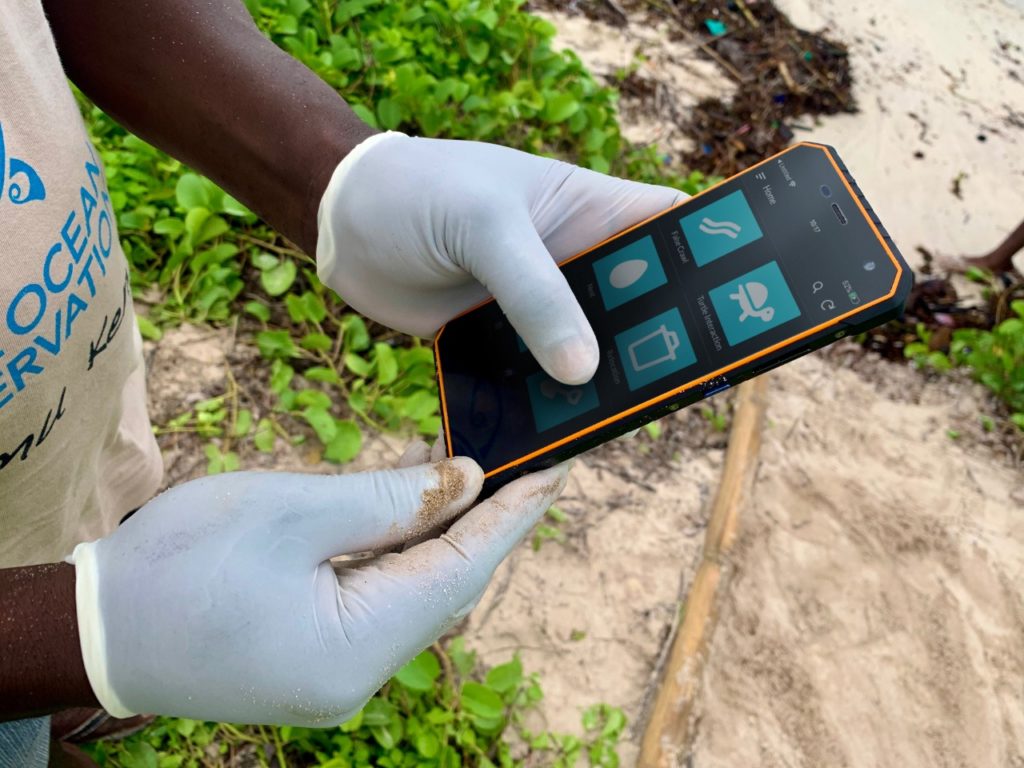
Newton Shungu using the LOC nest monitoring app
“In many field-data collection contexts, the feedback loop from data collection to insight may take several weeks or may simply never circle back to the field worker. But today, there are affordable, low code technologies that can help organizations build apps to get data from the field and equally importantly, provide information back, near-real-time.
LOC’s digitization strategy is all about empowerment. Not only improving the quality and speed of data collection, but also upskilling the entire team and empowering the team on the ground. A digitization plan requires the organization to undertake a broad-scale computer literacy programme and adopt an attitude of creative thinking & continuous learning. When staff members are given tools to gather insights into their work, they are further enabled to use these to think deeply about the impact their work is having.
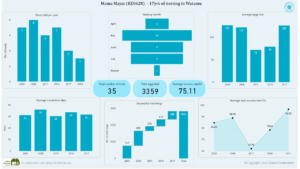
Visualization of Mama Mayai’s nesting data
The pattern we see in Mama Mayai’s nesting history is a clear example of this. LOC’s nest monitors now know to expect her back about every three years, they understand the importance of longer-term conservation planning and sustained efforts and that their nightly patrols have a tangible impact. Furthermore, their data collection efforts are critical in understanding turtle nesting behavior for the region and can provide invaluable insights”.
– Candice Pelser (Volunteer Project Manager, LOC Digitization)
We asked our team for their thoughts on the discovery
Newton had this to say: “It was amazing to record a new nest being laid and then finding out the nesting mother had such a long history with us and her nesting beach. We managed to link her nesting seasons and nests based on her tag, which is also interesting as she’s had the same tag for 17years without losing it along her journeys in the open ocean!”
When sharing the story with Lewa Karisa, our Turtle Rehabilitation Centre co-ordinator, he responded with amazement: “You know, in 2003 I was still in school and back then I had no idea that sea turtles even existed! A lot has changed since then, here I am working in a turtle rehab centre! I urge for everyone to please take care of sea turtles, there is so much to learn from them. We are living through this story today, and not just reading about it in a book of how things used to be when nature was thriving. We need to protect our marine environment so a similar amazing story can be told in another 17 years!”
Kahindi and Kiptum were the nest monitors back then. Kahindi still remains with us and doesn’t look a day older 😊
This is a very special moment for them. They plan to witness the hatching at the end of July and participate in the nest excavation. Where they will once again uncover the success of her nest and how many more hatchlings make their way to the big blue sea. Keep in touch to see Kahindi, Kiptum and the LOC team uncover more of Mama Mayai’s story.
Follow the story here.
Unfortunately, safe and natural turtle nesting beaches along the Kenyan coast are under immense pressure and threats – learn more in this article. We all need to work hard on protecting what precious spaces they do have. Both for the sea turtles and the many other species and people who depend on them too.
Our nest monitoring programme is made possible through donations, you can help us protect nesting beaches by Protecting a Nest or donating. Please help us keep Mama Mayai and turtles like her safe and nesting in these sites for decades more to come.

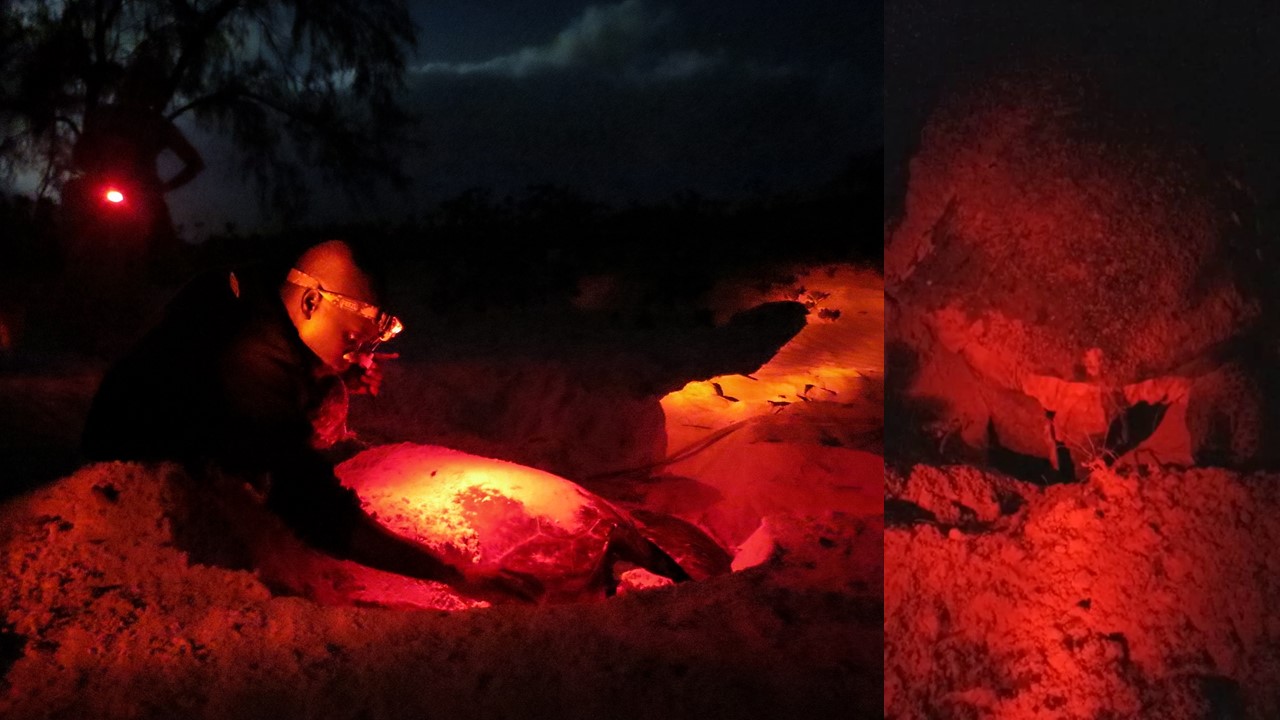
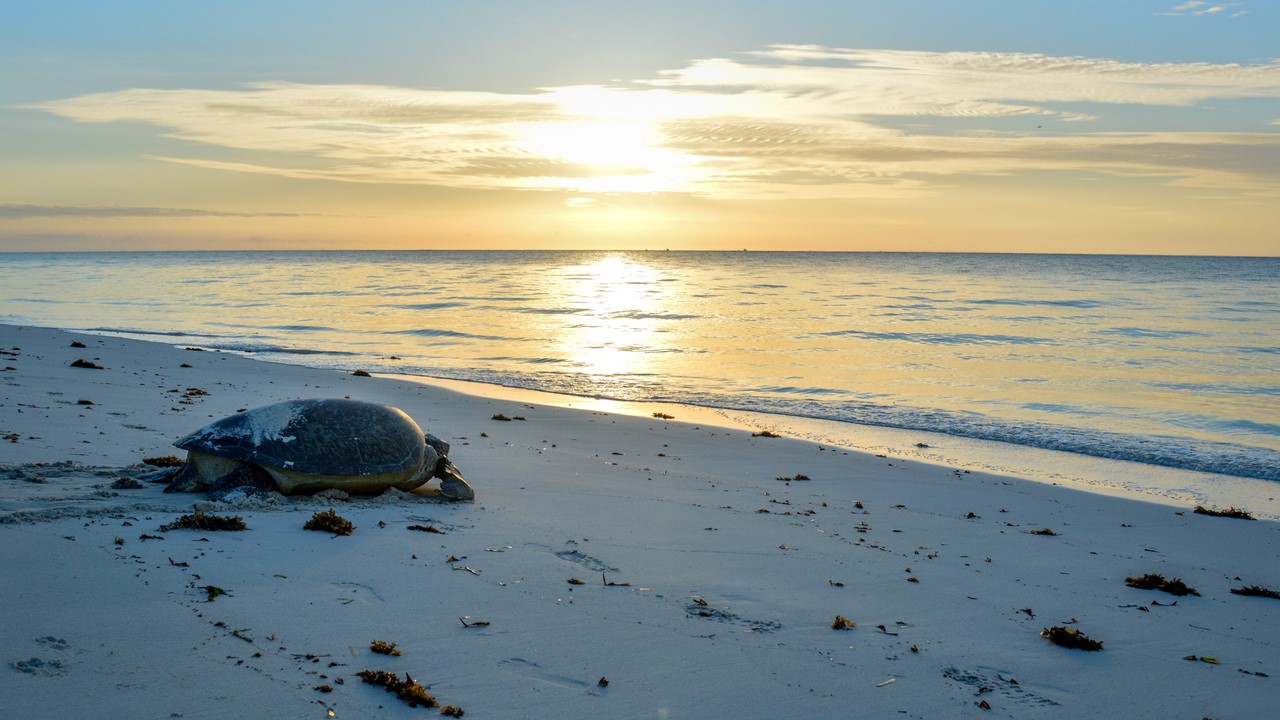
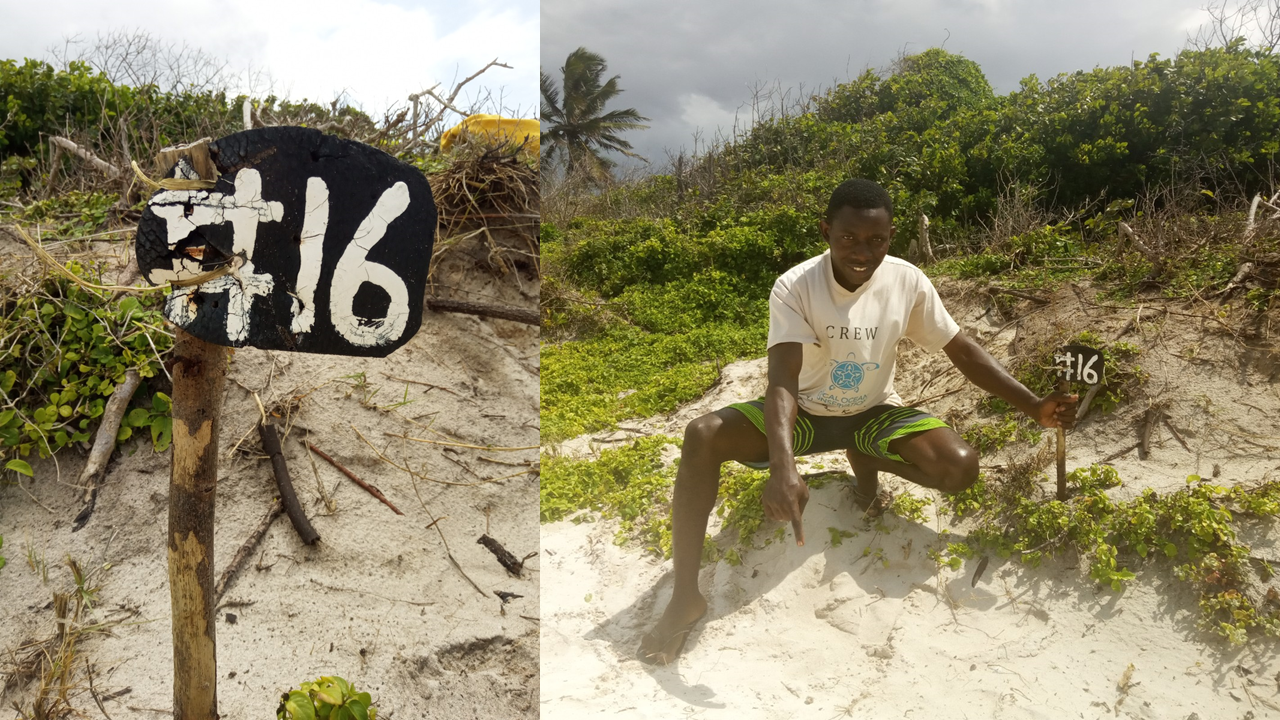
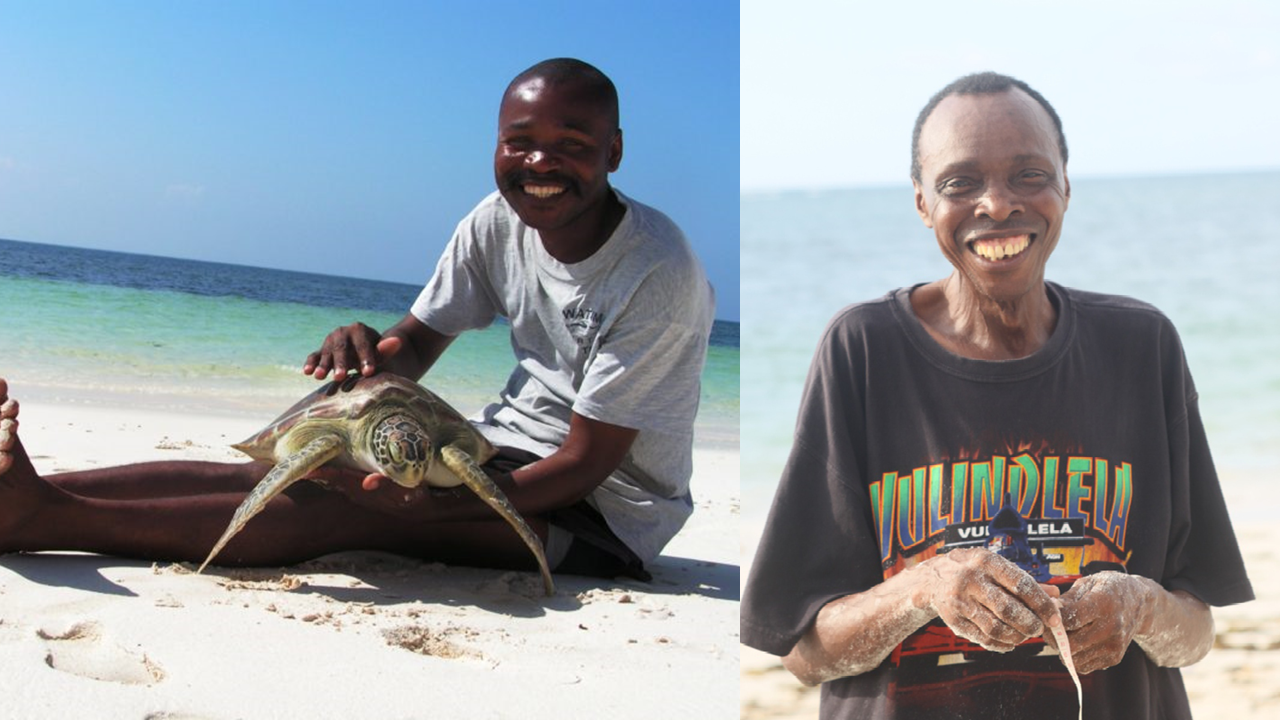
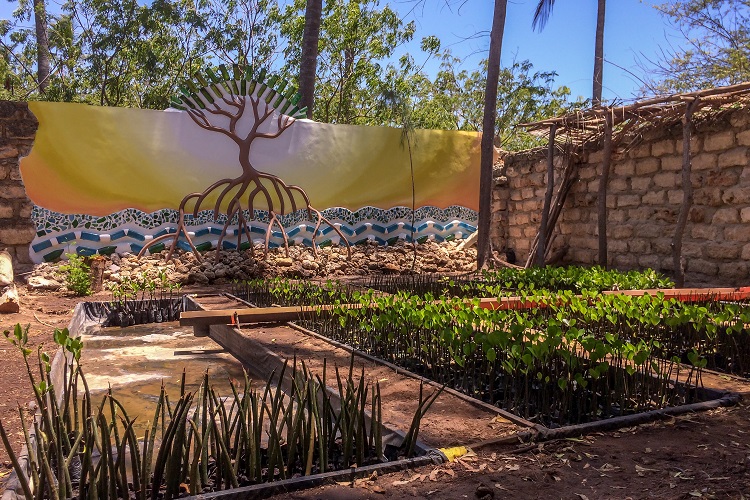

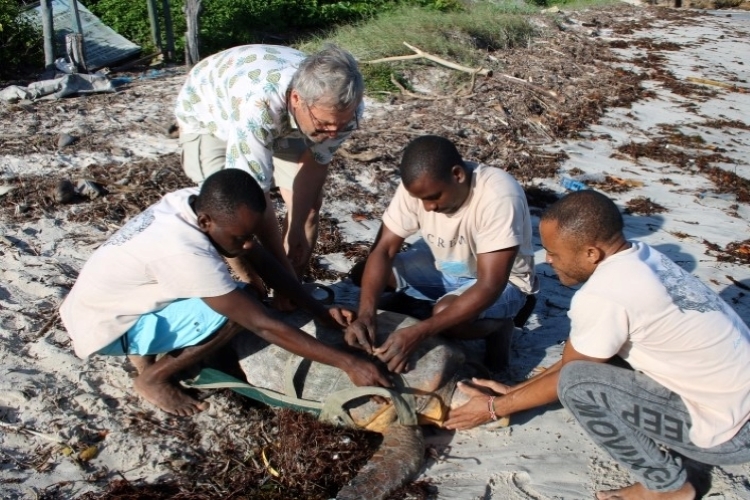

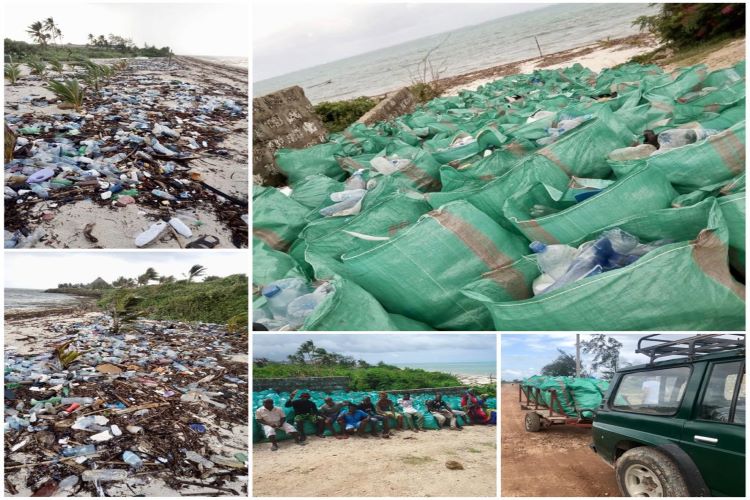
Leave A Comment